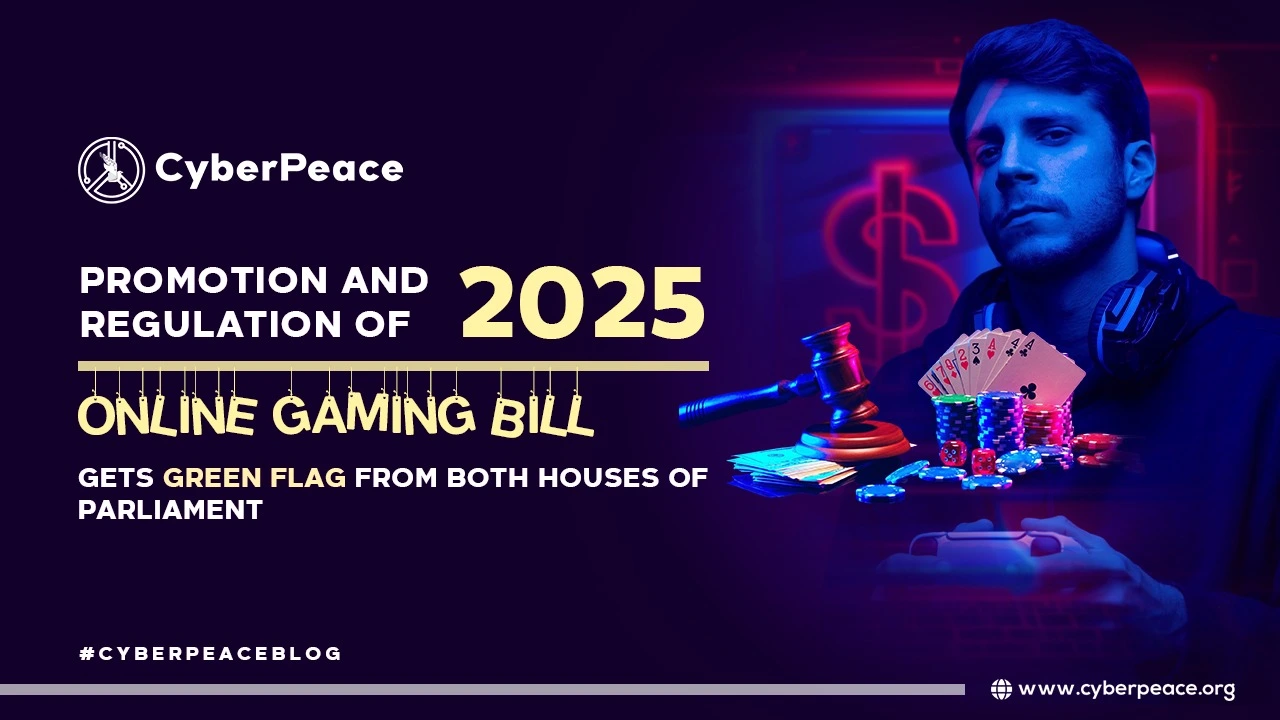#FactCheck: Viral image shows the Maldives mocking India with a "SURRENDER" sign on photo of Prime Minister Narendra Modi
Executive Summary:
A manipulated viral photo of a Maldivian building with an alleged oversized portrait of Indian Prime Minister Narendra Modi and the words "SURRENDER" went viral on social media. People responded with fear, indignation, and anxiety. Our research, however, showed that the image was manipulated and not authentic.

Claim:
A viral image claims that the Maldives displayed a huge portrait of PM Narendra Modi on a building front, along with the phrase “SURRENDER,” implying an act of national humiliation or submission.

Fact Check:
After a thorough examination of the viral post, we got to know that it had been altered. While the image displayed the same building, it was wrong to say it included Prime Minister Modi’s portrait along with the word “SURRENDER” shown in the viral version. We also checked the image with the Hive AI Detector, which marked it as 99.9% fake. This further confirmed that the viral image had been digitally altered.

During our research, we also found several images from Prime Minister Modi’s visit, including one of the same building displaying his portrait, shared by the official X handle of the Maldives National Defence Force (MNDF). The post mentioned “His Excellency Prime Minister Shri @narendramodi was warmly welcomed by His Excellency President Dr.@MMuizzu at Republic Square, where he was honored with a Guard of Honor by #MNDF on his state visit to Maldives.” This image, captured from a different angle, also does not feature the word “surrender.


Conclusion:
The claim that the Maldives showed a picture of PM Modi with a surrender message is incorrect and misleading. The image is altered and is being spread to mislead people and stir up controversy. Users should check the authenticity of photos before sharing.
- Claim: Viral image shows the Maldives mocking India with a surrender sign
- Claimed On: Social Media
- Fact Check: False and Misleading
Related Blogs

Introduction
In recent years, the online gaming sector has seen tremendous growth and is one of the fastest-growing components of the creative economy, contributing significantly to innovation, employment generation and export earnings. India possesses a large pool of skilled young professionals, strong technological capabilities and a rapidly growing domestic market, which together provide an opportunity for the country to assume a leadership role in the global value chain of online gaming. With this, the online gaming industry has also faced an environment of exploitation, abuse, with notable cases of fraud, money laundering, and other emerging cybercrimes. In order to protect the interests of players, ensure fair play and competition, safe and secure online gaming environment, the need for introducing and establishing dedicated gaming regulation was a need of the hour.
On 20 August 2025, the Union government introduced a new bill, ‘Promotion and Regulation of Online Gaming Bill, 2025’ in Lok Sabha that seeks to prohibit online money gaming, including advertisements and financial transactions related to such platforms. From the introduction, the said bill was passed at 5 PM on the same date. Further, the upper house of parliament (Rajya Sabha) passed the bill on 21st August 2025. The bill can be seen as a progressive step towards building safer online gaming spaces for everyone, especially for our youth and combating the emerging cybercrime threats present in the online gaming landscape.
Key Highlights of the Bill
The Bill extends to the whole of India. It also applies to any online money gaming service offered within India or operated from outside the country but accessible in India.
- Definition of E-sports:
Section 2(1)(c) of the Bill defines e-sports as:-
(i) is played as part of multi-sports events;
(ii) involves organised competitive events between individuals or teams, conducted in multiplayer formats governed by predefined rules;
(iii) is duly recognised under the National Sports Governance Act, 2025, and registered with the Authority or agency under section 3;
(iv) has outcome determined solely by factors such as physical dexterity, mental agility, strategic thinking or other similar skills of users as players;
(v) may include payment of registration or participation fees solely for the purpose of entering the competition or covering administrative costs and may include performance-based prize money by the player; and
(vi)shall not involve the placing of bets, wagers or any other stakes by any person, whether or not such person is a participant, including any winning out of such bets, wagers or any other stakes;
- Prohibition of Online Money Gaming and Advertisement thereof
The Bill prohibits the offering of online money games and online money gaming services. It also bans all forms of advertisements or promotions connected to online money games. This includes endorsements by individuals or entities. - Financial Transactions
Banks, financial institutions, and other intermediaries are barred from facilitating transactions related to online money gaming services. - Criminal Liability
Violation of the provisions on online money gaming can result in imprisonment for up to three years, or a fine of up to ₹1 crore, or both. Repeat offenders face stricter punishment with higher fines and longer jail terms. - Cognizable and Non-Bailable Offences
Offences relating to offering online money gaming services and facilitating financial transactions for such games are categorised as cognizable and non-bailable. This gives law enforcement agencies greater power to act without requiring prior approval.
In conversation with CyberPeace ~
Shailendra Vikram Singh, Former Deputy Secretary (Cyber & Information Security), Ministry of Home Affairs, GOI . He highlighted that
"The passage of the Promotion and Regulation of Online Gaming Bill, 2025 in the Lok Sabha highlights the government’s growing priority on national security, public safety, and health in digital regulation. Unfortunately, the real money gaming industry, despite its growth and promise, did not take proactive steps to address these concerns. The absence of safeguards and engagement left the government with no choice but to adopt a blanket ban."Having worked on this issue from both the government and industry side, the clear lesson is that in sensitive digital sectors, early regulatory alignment and constructive dialogue are not optional but essential. Going forward, collaboration is the only way to achieve a balance between innovation and responsibility.”
CyberPeace Outlook
The Promotion and Regulation of Online Gaming Bill, 2025, marks a decisive policy shift by simultaneously fostering the growth of e-sports, educational and social gaming, and imposing an absolute prohibition on online money games. By recognising e-sports as legitimate, skill-based competitive sports under the National Sports Governance Act, 2025, and establishing a central Authority for oversight, registration, and regulation, the Bill creates an institutional framework for safe and responsible development of the sector. The Bill completely bans real money games (RMGs), regardless of whether they are skill-based or chance-based or both, hence it poses significant questions on RMG companies' legal standing, upon which the gaming industry has raised its conundrum. Further, it addresses urgent threats such as cybercrime, gaming addiction, online betting, money laundering, and the misuse of gaming platforms for illicit activities. The move reflects a balanced approach, encouraging innovation and digital skill-building, while safeguarding public order, consumer interests, and financial integrity.
References
- https://prsindia.org/files/bills_acts/bills_parliament/2025/Bill_Text-Online_Gaming_Bill_2025.pdf
- https://prsindia.org/billtrack/the-promotion-and-regulation-of-online-gaming-bill-2025
- https://www.hindustantimes.com/india-news/rajya-sabha-clears-online-gaming-bill-a-day-after-lok-sabha-approval-101755766847840.html

Introduction
In order to effectively deal with growing cyber crime and threats the Telangana police has taken initiative by launching Law Enforcement Chief Information Security Officers (CISO) Council, an innovative project launched in Telangana, India, which is a significant response to the growing cyber threat landscape. With cyber incidents increasing in the recent years and concerning statistics such as a tenfold rise in password-based attacks and an increase in ransomware attacks, the Council aims to strengthen the region's digital defenses. It primarily focuses on reducing vulnerability, improving resilience, and providing real-time threat intelligence. By promoting partnerships between the public and private sectors, offering legal and regulatory guidance, and facilitating networking and learning opportunities, this collaborative effort involving industry, academia, and law enforcement is a crucial move towards protecting critical infrastructure and businesses from cyber threats, the Telangana police in partnership with industry and academia, has launched the Law Enforcement CISO (Chief Information Security Officers) Council of India on 7th October 2023. Chief of the Central Crime Station Stephen Ravindra said that the forum is a path-breaking initiative and the Council represents an open platform for all the enforcement agencies in the country. The upcoming inititiative inculcate close association with different stakeholders, which includes government departments, startups, centers of excellence and international collaborations, carving a nieche for a sturdy cybersecurity envirnoment.
Enhancing Cybersecurity is the Need of the Hour:
The recent launch of the Law Enforcement CISO Council in Hyderabad, India emphasized the need for government organizations and industries to prioritize the protection of their digital space. Cyber incidents, ransomware attacks, and threats to critical infrastructure have been on the rise, making it essential to take proactive cybersecurity measures. Disturbing statistics regarding cyber threats, such as password-based attacks, BEC (Business Email Compromise) attempts, and vulnerabilities in the supply chain, highlight the importance of addressing these issues urgently. This initiative aims to provide real-time threat intelligence, legal guidance, and encourages collaboration between public and private organizations in order to combat cybercrime. Given that every cyber attack has criminal elements, the establishment of these councils is a crucial step towards minimizing vulnerabilities, enhancing resilience, and ensuring the security of our digital world.
International Issue & Domestic Issue:
The announcement by the Telangana State Police, is a proactive step to form a first-of-its-kind Law Enforcement CISO Council (LECC), as part of an initiative from the State government to give a further impetus to cyber security. Jointly with its law enforcement partners, the Telangana Police has decided to make cyber cops more efficient and shape them on par with the technology advancements. The Telangana police have proved its commitment for a secure cyber environment by recovering INR 2.2 crore and INR 6.8 crore lost by people in cyber frauds which is industry’s highest rate of helping the victims.
The Police department complemented efforts by corporate executives for their personal interest in the subject and mentioned police officers’ expertise and inputs from professionals from the industry need to work cohesively to prevent further increase in the number of cyber crime cases. Data indicates that the exponential increase in cyber threats in recent times necessitates an informed and prudent action with the cooperation and collaboration of the IT Department of Telangana, centers of excellence, start-ups, white hats or ethical hackers, and international associations.
A report from Telangana commissioner states the trend of a surge in the number of cyber incidents and vulnerabilities of Government organizations, Critical Infrastructure and MSMEs and stressed that every cyber security breaches have an element of criminality in it. The Law Enforcement CISO Council is a progressive step in this direction which ensures a reduced cyber attacks, enhanced resilience, actionable strategic and tactical real-time threat intelligence, legal guidance, opportunities for public private partnerships, networking, learning and much more.
The Secretary of SCSC, shared some alarming statistics on the threats that are currently rampant across the digital world. To combat it in today’s era of widespread digital dependence, the program launched by the Telangana Police stands as a commendable step or an initiative that offers a glimmer of aspiration. It brings together all the heroes who want to protect the digital spaces and counter the growing number of threats.
Contribution of Telangana Police for carving a niche to be followed:
The launch of the Law Enforcement CISO Council in Telangana represents a pivotal step in addressing the pressing challenges posed by escalating cyber threats. As highlighted by the Director General of Police, the initiative recognizes the critical need to combat cybercrime, which is growing at an alarming rate. The Council not only acknowledges the casual approach often taken towards cybersecurity but also aims to rectify it by fostering collaboration between law enforcement, industry, and academia.
One of the most significant positive aspects of this initiative is its commitment to sharing intelligence, ensuring that the hard-earned lessons from cyber fraud victims are translated into protective measures for others. By collaborating with the IT Department of Telangana, centers of excellence, startups, and ethical hackers, the Council is poised to develop robust Standard Operating Protocols (SOPs) and innovative tools to counter cyber threats effectively.
Moreover, the Council's emphasis on Public-Private Partnerships (PPPs) underscores its proactive approach in dealing with the evolving landscape of cyber threats. It offers a platform for networking and learning, enabling information sharing, and will contribute to reducing the attack surface, enhancing resilience, and providing real-time threat intelligence. Additionally, the Council will provide legal and regulatory guidance, which is crucial in navigating the complex realm of cybercrime. This collective effort represents a promising way forward in safeguarding digital spaces, critical infrastructure, and industries against cyber threats and ensuring a safer digital future for all.
Conclusion:
The Law Enforcement CISO Council in Telangana is an innovative effort to strengthen cybersecurity in the state. With the rise in cybercrimes and vulnerabilities, the council brings together expertise from various sectors to establish a strong defense against digital threats. Its goals include reducing vulnerabilities, improving resilience, and ensuring timely threat intelligence. Additionally, the council provides guidance on legal and regulatory matters, promotes collaborations between the public and private sectors, and creates opportunities for networking and knowledge-sharing. Through these important initiatives, the CISO Council will play a crucial role in establishing digital security and protecting the state from cyber threats.
References:
- http://www.uniindia.com/telangana-police-launches-india-s-first-law-enforcement-ciso-council/south/news/3065497.html
- https://indtoday.com/telangana-police-launched-indias-first-law-enforcement-ciso-council/
- https://www.technologyforyou.org/telangana-police-launched-indias-first-law-enforcement-ciso-council/
- https://timesofindia.indiatimes.com/city/hyderabad/victims-of-cyber-fraud-get-back-rs-2-2-cr-lost-money-in-bank-a/cs/articleshow/104226477.cms?from=mdr

Introduction
Netizens across the globe have been enjoying the fruits of technological advancements in the digital century. Our personal and professional life has been impacted deeply by the new technologies. The previous year we saw an exponential rise in blockchain integration and the applications of Web 3.0. There is no denying that the Covid-19 pandemic caused a rapid rise in technology and internet penetration all across the globe, bringing the world closer with respect to connectivity and the exchange of ideas and knowledge. Tech advancements have definitely made our lives easier, but the same has also opened the doors to various vulnerabilities and new potential threats. As cyberspace expands, so do the vulnerabilities associated with it, and it is critical we take note of such issues and create safeguards to the extent that such incidents are prevented before they occur. We need to create sustainable and secure cyberspace for future generations.MetaVerse in 2023The metaverse was introduced by Facebook (now Meta) in 2021 as a peak into the future of cyberspace. Since then, tech developers have been working towards arming the metaverse with extraordinary innovations and applications. Netizens came across news like someone bought a house or a plot in the metaverse, someone bought a car in the metaverse, and so on, these news were taken to be the evidence of the netizen’s transition towards the new digital age as we have seen in sci-fi movies. But today this type of news has become history and the metaverse is expanding faster than ever. Let us look at the latest developments and trends in the metaverse-
- Avatar creation - The avatar creation in the metaverse will be a pivotal move as the avatars will represent the user, and essentially it will be the digital, version of the user and will be similar to the user's personal and physical traits to maintain realism in the metaverse.
- Architecture firms - Metaverse has its own set of architects who will be working towards creating your dream home or pro[erty in the metaverse, the heavy code-based services are now being sold just as if they were in the physical space.
- Mining - The metaverse already has companies who are mining gold, silver, petroleum, and other resources for the avatars in the metaverse, for instance, if someone has bought a car in the metaverse, it will still need fuel to run.
- Security firms - These firms are the first line of defenders in the metaverse as they provide tech-based solutions and protocols to secure one’s avatar and belongings in the metaverse.
- Metaverse Police - Interpol, along with its global partner organization has created the metaverse police, who will be working towards creating a safe cyber ecosystem by maintaining compliance with digital laws and ethics.
Advancements beyond metaverse in 2023
Technology continues to be a critical force for change in the world. Technology breakthroughs give enterprises more possibilities to lift their productivity and invent offerings. And while it remains difficult to forecast how technology trends will play out, business leaders can plan ahead better by watching the development of new technologies, anticipating how companies could utilize them, and understanding the factors that impact innovation and adoption.
- Applied observability
It advances the practice of pattern recognition. To foresee and identify abnormalities and offer solutions, one must have the capacity to delve deeply into complicated systems and a stream of data. Data fuels this aspect of tech growth in the future.
- Digital Immune System
To ensure that all major systems operate round-the-clock to deliver uninterrupted services, Digital Immune System will combine observability, AI-augmented testing, chaos engineering, site reliability engineering (SRE), and software supply chain security. This will take the efficiency of the systems to a new level.
- Super apps
These represent the upcoming shift in application usage, design, and development, where consumers will utilise a single app to manage most systems in an enterprise ecosystem. Over 50% of the world’s population will utilise super apps on a daily basis to fulfill their daily personal and professional needs.
- AR/VR and BlockChain technology
A combination of better interconnected, safe, and immersive virtual environments where people and businesses may recreate real-life scenarios will be created by combining AR/VR, AI/ML, IoT, and Blockchain, thus creating a new vertical of innovation with keen technologies of Web 3.0.
- AAI
The next level of AI, i.e., Advanced Artificial Intelligence (AI), will revolutionise machine learning, pattern recognition, and computing. It aims to fully automate processes without requiring any manual input, thus eradicating the issues of human error and bad actor influence completely.
- Corporate Metaverse
Aside from its power as a marketing tool, the metaverse promises to provide platforms, tools, and entire virtual worlds where business can be done remotely, efficiently, and intelligently. We can expect to see the metaverse concept merge with the idea of the “digital twin” – virtual simulations of real-world products, processes, or operations that can be used to test and prototype new ideas in the safe environment of the digital domain. From wind farms to Formula 1 cars, designers are recreating physical objects inside virtual worlds where their efficiency can be stress-tested under any conceivable condition without the resource costs that would be incurred by testing them in the physical world.ConclusionIn 2023, we will see more advanced use cases for technology such as motion capture, which will mean that as well as looking and sounding more like us, our avatars will adopt our own unique gestures and body language. We may even start to see further developments in the fields of autonomous avatars – meaning they won't be under our direct control but will be enabled by AI to act as our representatives in the digital world while we ourselves get on with other, completely unrelated tasks. As we go deeper into cyberspace, we need to remember the basic safety practices and inculcate them with respect to cyberspace and work towards creating string policies and legislations to safeguard the digital rights and duties of the netizen to create a wholesome and interdependent cyber ecosystem.


